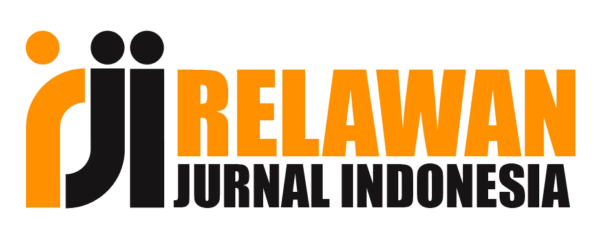MENGGALI KETERAMPILAN CREATIVE PROBLEM SOLVING YANG DIMILIKI SISWA SMP MELALUI PEMBELAJARAN IPA BERBASIS STEM
Abstract
ABSTRAK
Perkembangan IPTEK yang sangat pesat di abad ke-21 mengakibatkan semakin ketat persaingan individu dalam mengembangkan keterampilan dan potensi yang ada pada dirinya, untuk mengimbangi pesatnya perkembangan IPTEK, setiap orang haruslah memiliki keterampilan 4c yaitu, communication, critical thinking, collaboration, dan creativity. Salah satu keterampilan abad ke-21 yang menjadi fokus pada penelitian ini adalah kreativitas. Secara lebih spesifik, keterampilan yang akan dikembangkan yaitu keterampilan berpikir kreatif dalam memecahkan masalah. Penelitian ini bertujuan untuk mengetahui profil CPS (Creative Problem Solving) dengan pembelajaran berbasis STEM pada sampel terpilih yaitu siswa kelas IX yang menyukai sains sebanyak 18 orang di salah satu SMP Negeri di Kota Bandung. Pengumpulan data dilakukan dengan teknik tes berupa soal uraian yang kemudian dianalisis menggunakan CPS. Hasil analisis data memperlihatkan bahwa: (1) Pada tahap penilaian objective finding, persentase skor rata-rata yang diperoleh siswa sebesar 48,15% (2) Pada tahap penilaian fact finding, persentase skor rata-rata yang diperoleh siswa sebesar 44,44% (3) Pada tahap penilaian problem finding, persentase skor rata-rata yang diperoleh siswa sebesar 46,30% (4) Pada tahap penilaian idea finding, persentase skor rata-rata yang diperoleh siswa sebesar 68,52% (5) Pada tahap penilaian solution finding, persentase skor rata-rata yang diperoleh siswa sebesar 38,89%. Jadi dapat disimpulkan bahwa siswa sudah dapat mengemukakan dengan baik gagasan untuk menyelesaikan suatu permasalahan dan siswa juga sudah dapat menjelaskan gambaran umum, menemukan fakta baru, serta mengetahui permasalahan dan dampak yang timbul dari suatu kejadian. Namun perlu ditingkatkan keterampilan siswa dalam menentukan solusi terbaik dalam menyelesaikan masalah.
Kata kunci: Creative Problem Solving; pembelajaran IPA berbasis STEM
ABSTRACT
The development of science and technology in the 21st century are rapidly growing which create rivalry between individuals to establish their skills and potentials within their circumstances. To compensate the rapid development of science and technology, everyone need to have 4cs skills; communication, critical thinking, collaboration, and creativity. One of the 21st century skills which will become the focus of this research is creativity, specifically creative problem solving. This study aims to analyze the profile of student’s CPS (Creative Problem Solving) skill with STEM-based science learning on selected samples of 18 students from grade 9 who like science in one of the Junior High School in Bandung. Data is collected by test procedure in the form of description question thus analyzed by CPS. The result shows that: (1) In the assessment phase of objective finding, average score is 48.15% (2) In the assessment phase of fact finding, average score is 44.44% (3) In the assessment phase of problem finding, average score is 46.30% (4) In the idea finding assessment phase, average score is 68.52% (5) In the assessment phase of solution finding, of average score is 38.89%. The conclusions are students have been able to solve a problem as well as explaining the general conditions, finding new facts, and formulating the problems. However, it is mandatory to improve students' skill to determine the best solution to solve the problem.
Keywords: Creative Problem Solving; STEM-based Science Learning
Full Text:
PDF (Bahasa Indonesia)References
Zubaidah, Siti. (2016). Keterampilan Abad ke-21: Keterampilan yang Diajarkan Melalui Pembelajaran. ResearcGate hlm. 2-3
Torrance, E. P. (1988). The nature of creativity as manifest in its testing. In R. J. Sternberg (Ed.), The nature of creativity. New York: Cambridge University Press.
Torrance, E. P. (1965). Scientif Views of Creativity and Factors Affecting Its Growth. Creativity and learning, 94(3). 663-681.
Alexander, K.D. (2007). Effects Instruction in Creative Problem Solving on Cognition, Creativity, and Satisfaction among Ninth Grade Students in an Introduction to World Agricultural Science and Technology Course. Texas Tech University.
Bilal, A. A. (2012). The Effect of Using Brainstorming Strategy in Developing Creative Problem Solving Skills Among Female Students in Princess Alia University College. American International Journal of Contemporary Research Vol. 2 No.10, hlm. 29-38.
Mutaqin, Azis. (2016). Penerapan Creative Problem Solving yang Disisipkan pada Model Pembelajaran Berbasis Project untuk Meningkatkan Kemampuan Kognitif, Keterampilan Proses Sains dan Keterampilan Berpikir Creative Problem Solving Siswa (Tesis). Sekolah Pascasarjana, Universitas Pendidikan
Indonesia, bandung.
Treffinger, Donald J.; Isaksen, Scott G. (2005). Creative Problem Solving: The History, Development, and Implications for Gifted Education and Talent Development. National. Association for Gifted Children vol 49 no 4
Bybee, Rodger W. (2013). The Case for STEM Education-Challenges and Opportunities. Virginia: NSTA Press
Sugiyono. 2012. Metodologi Penelitian Pendidikan Pendekatan Kuantitatif, Kualitatif dan R & D. Bandung: Alfabeta
Arikunto, Suharsimi. (2010). Prosedur penelitian. Jakarta: Rineka Cipta.
Torlakson. T. (2014). Innovate: A Blueprint for Science, Technology, Engineering, and Mathematics in California Public Education. California: State Superintendent of Public Instruction.
DOI: https://doi.org/10.17509/wapfi.v3i1.10941
Refbacks
- There are currently no refbacks.
Copyright (c) 2018 Wahana Pendidikan Fisika
The Journal Wahana Pendidikan Fisika http://ejournal.upi.edu/index.php/WapFi/ is licensed under a Creative Commons Attribution-ShareAlike 4.0 International License
The Journal WaPFi (Wahana Pendidikan Fisika).
All rights reserverd. pISSN 2338-1027 eISSN 2685-4414
Copyright © Faculty of Mathematics and Science Education (FPMIPA) Universitas Pendidikan Indonesia (UPI)










